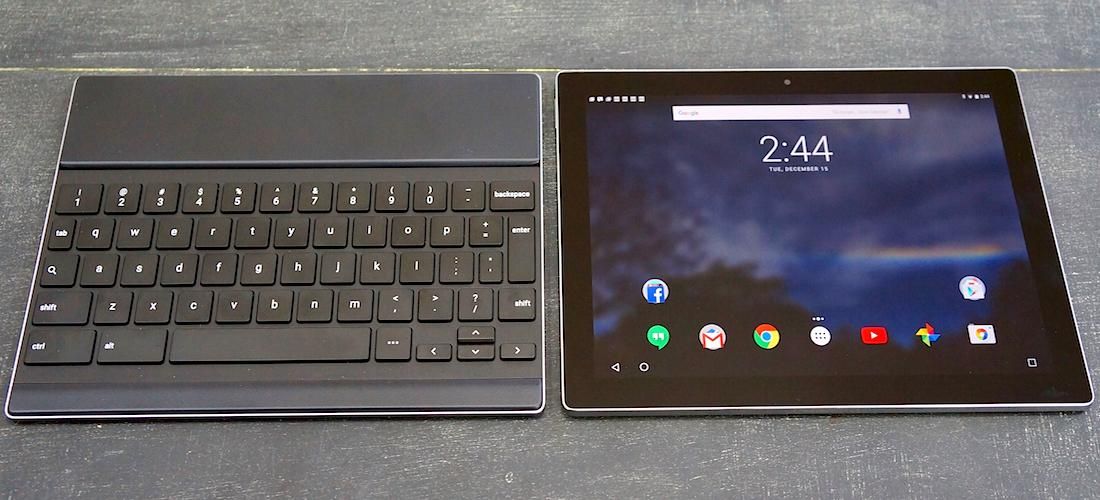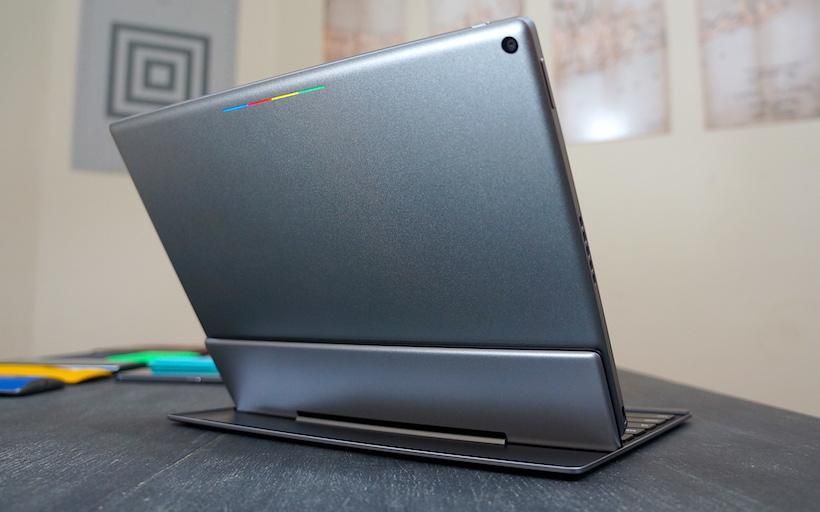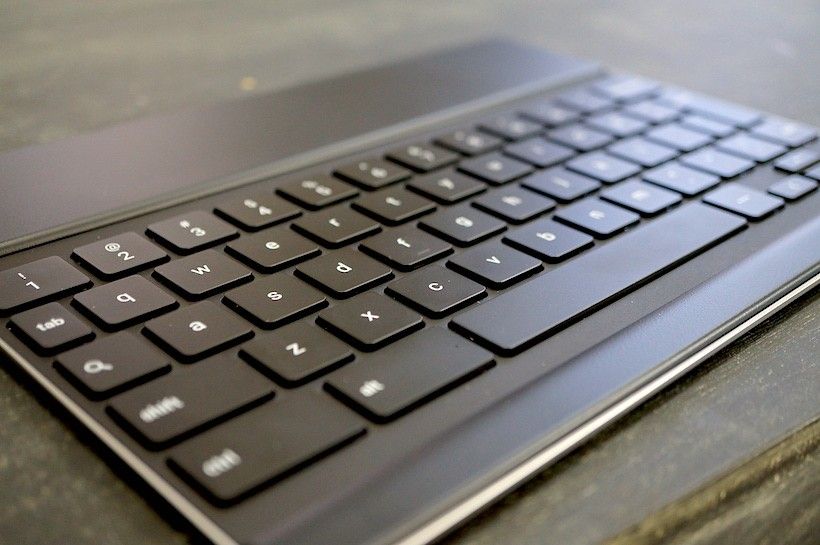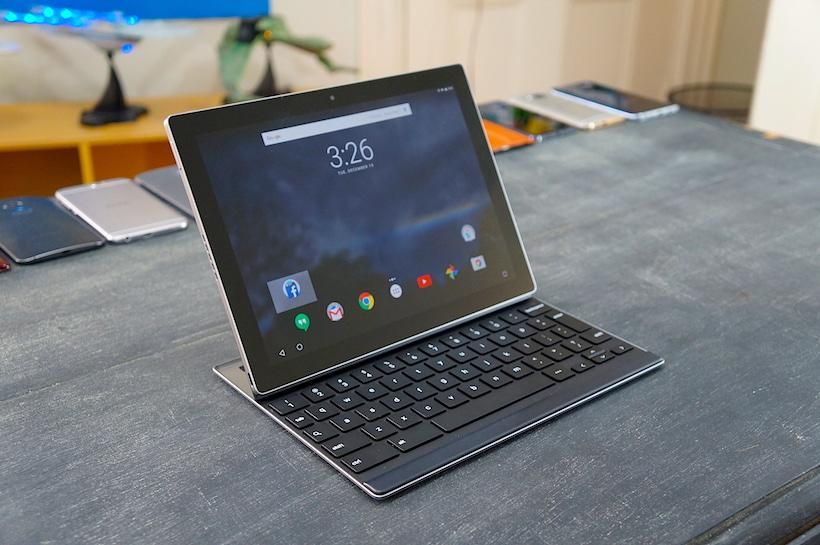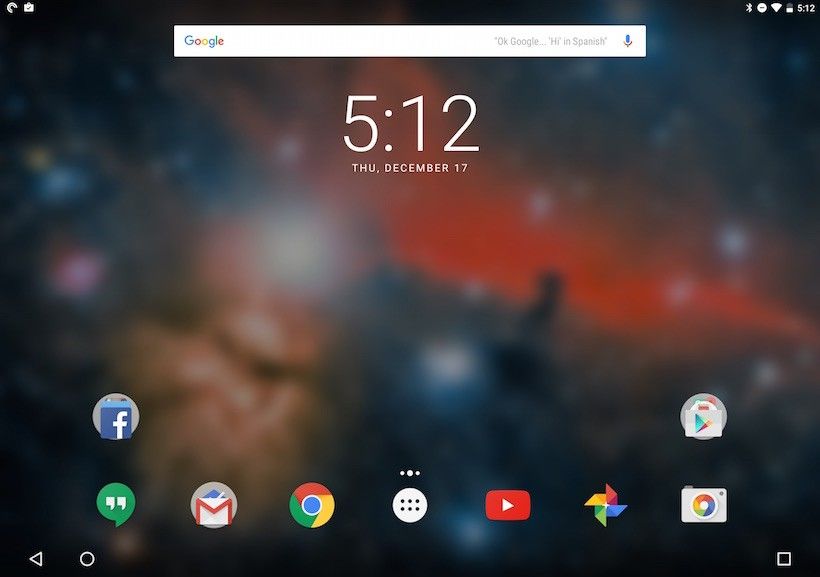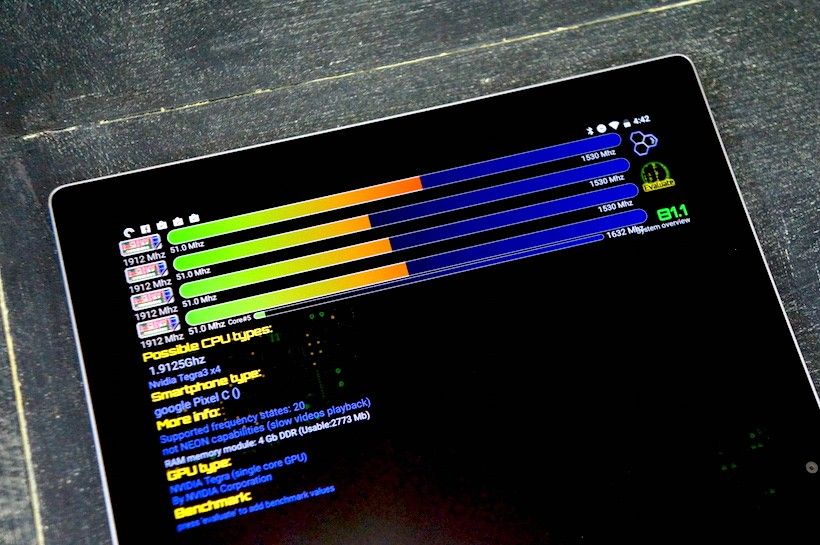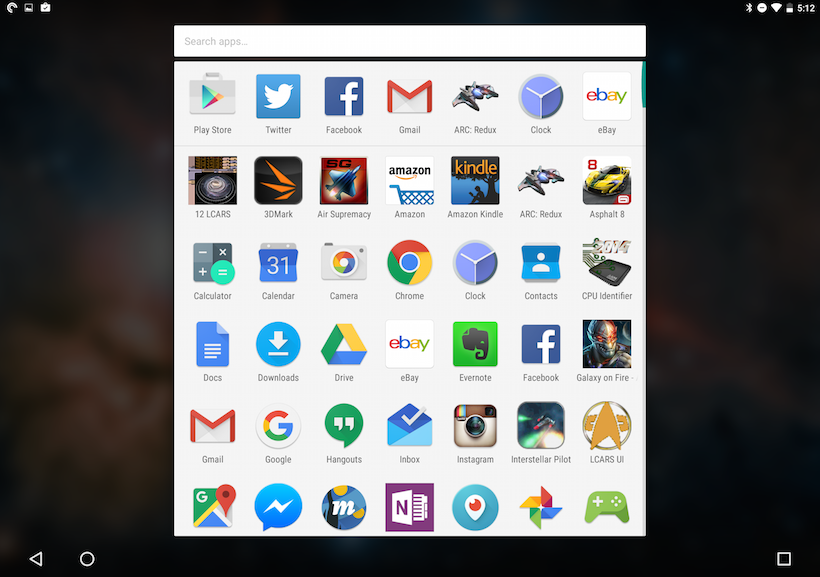The Pixel C probably isn’t the tablet you think it is. When it was announced a few months back alongside Google’s new Nexus phones, it was presented with its optional keyboard connected and positioned not as a tablet, but as a convertible (in fact, that’s what the C stands for.) But while the hardware absolutely delivers in this respect, the software is still more smartphone than tablet. Does the Pixel C belong on your desk this holiday season? Scroll on down for our full Google Pixel C review!
Video Review · Hardware & Keyboard · Software · Performance
Pros/Cons · Pricing/Availability · Conclusion
Google Pixel C Review Video
Hardware & Keyboard
If you’re someone who puts hardware above all, close this review now – and go order a Pixel C. The design is classic and refined, minimal without being dull. It’s made almost entirely of aluminum, with precision-cut ports for the twin stereo speakers, power and volume keys and the single USB Type C port. There’s not a screw hole or misaligned seam in sight, the entire casing bearing a smooth, refined industrial design. That design is unmarred by any silkscreened logos or other traditional branding, the only nod to its Google origins being the thin LED stripe on the top edge of the back panel. By default that stripe glows with the company’s rainbow colors when the tablet is powered on; when it’s off, a double-tap of a knuckle will wake it to display the current battery charge in yellow.
On the flip side, the display is a large one at 10.2 inches, but the Pixel C’s 7mm profile makes it feel like a much smaller tablet; with its screen-to-bezel ratio, it faintly resembles an oversized BlackBerry PlayBook. The panel itself is LTPS (low temperature poly-silicon) with a maximum brightness of 500 nit and an sRGB color gamut. It comes packing a resolution of 2560 x 1800 (307ppi) – about the same as Google’s Nexus 10 from three years ago but still sharper than either Apple’s iPad family or Microsoft’s Surface line. If you want to nitpick there’s certainly room to do it: there’s color shifting on the screen when viewing it even slightly off-center, and as we discovered on the most recent Pocketnow Weekly podcast, not everyone’s a fan of the always-on LED. But these are very minor complaints and they’re certainly not shared by everyone. In terms of industrial design and fit and finish, this is one of the very best tablets you can find on Android.
That exceptional hardware work is mirrored in the Pixel C’s keyboard, an optional accessory that comes with a $149 premium. While that’s no small amount of dough, it’s actually a few bucks cheaper than comparable attachments for the iPad Pro and Surface Pro 4 – and more importantly, the Pixel C’s keyboard has them both beat for sheer coolness. Why? Magnets.
Those magnets are embedded, they’re directional, and they’re no joke. Bring the Pixel C anywhere close to the keyboard’s attachment hinge and the two will slap together with an authoritative fwack. The magnets are strong enough to keep the two halves together no matter how you carry the Pixel C, strong enough to keep the tablet firmly in place even as you swing the hinge through its full range of motion between 100 and 135 degrees. Like most convertibles, the Pixel C is a bit top-heavy for lap work but it’s workable in a pinch, and on a table or a desk it’s very solid.
The typing experience is great. Like really, really great. With a key pitch of 18.8mm and key travel of 1.4mm, there’s not much of a learning curve even if you’re used to a wider notebook: we adapted from a MacBook Pro in less than a day. Android also supports most common keyboard shortcuts, from copy-paste (Ctrl+X, C, V), to bold italic and underline (Ctrl+B, I, U), to undo (Ctrl+Z) to tab shuffling in Chrome (Ctrl+T), making the experience even more akin to using a “real” computer. The keyboard talks to the Pixel C via Bluetooth, and the tablet can tell when the accessory is attached and when it isn’t; when it senses the keyboard has been disconnected, it automatically deploys the virtual keyboard if you’re working inside a text field. On our retail unit (which we purchased from the Google Store) the connection has been flawless and changing modes has been nearly instantaneous. Google claims the keyboard’s embedded 0.5 Wh power cell will power it for up to two months, but you’ll probably never have to put that to the test: it automatically charges via induction when you “close” the convertible by flipping the keyboard over. This is a very smart product.
Software
The Pixel C ships with Android Marshmallow, which is an excellent smartphone operating system. On a 10-inch display optimized for landscape though, it sometimes feels like it’s stretching to cover the whole canvas, with interface elements like hamburger menus banished to the extreme corners of the screen. Once you get used to that and you start getting comfy with the keyboard, you might start to feel like you’ve got a real productivity beast on your hands. That’s how Google is positioning the Pixel C, as a new way to play and be productive on one device. And to a limited extent it succeeds: you can work on a document or spreadsheet in Docs, for example, while listening to Spotify in the background and taking the occasional YouTube or Netflix break. That’s how we wrote the script for the video review above, and it was a largely enjoyable experience.
The problem comes when you try to push the Pixel C any further into that convertible territory. For one thing, the perennial problem of some apps not being optimized for tablets is still very much alive: Instagram and Snapchat, for example, still force you to rotate the device to portrait, which is an awkward experience if you’re using the keyboard. And streaming music in the background is about as close as you can get to any kind of heavy multitasking. Because there’s no native split-screen support, you’re forced to hop between your active apps any time you want to leave the movie you’re watching to answer a Hangout, say … or flit away from that long article you’re reading to check your Twitter feed. And thanks to Marshmallow’s pretty-but-sluggish transition animations, such card flipping quickly starts to feel like wading through molasses. (Yes, you can use a third party solution like TinyApps to run some overlays, but that’s a kludgy solution.) There are occasional stumbles, too: once, while juggling a couple Hangouts with Chrome, Spotify closed itself, abruptly ending our background music streaming. On another occasion, it was Pocket Casts that gave up, forcing us to hop back in and reload the app to resume our background audio. That’s the very definition of “working and playing on the same device,” something the Pixel C was designed to excel at – so you can understand why the device has taken some heat from early reviewers.
But in some respects, the Pixel C has gotten a raw deal. Even the vaunted iPad has some of the same problems with a lack of optimized tablet apps (the aforementioned Instagram and Snapchat behave the same way on iOS). Microsoft’s Surface Pro line can do much more than the Pixel C, sure – but at a significantly higher cost. And an out-of-the-box update seems to have vanquished many of the problems we saw on pre-release hardware: the sluggish software and keyboard connection issues are nowhere to be found on our retail unit. When you actually use the Pixel C, hold it in your hands and type on its keyboard, it’s easier to understand why it’s priced the way it is.
Performance
The Pixel C handles everyday tasks quite well on its Tegra X1 processor (backed up by 3GB of LPDDR4 RAM), with the occasional sluggishness due mostly to Marshmallow’s aforementioned transition animations. Graphics are handled by a 256-core Maxwell GPU that handles games from Asphalt 8 to Galaxy on Fire to Sparkle 2 to Sim City just fine. Also, the sound from the stereo speakers is plenty loud, if lacking in bass.
The experience isn’t perfect. Some games just don’t like to run on this hardware: ARC:Redux reliably crashes on startup, while other titles like Sky Gamblers: Air Supremacy run with graphics so corrupted that they’re unplayable. These are the exact same problems we encountered during our time with the (also Tegra-powered) Nexus 9 last year … so is this a CPU problem? GPU? A software issue? It’s tough to say. Admittedly these are pretty obscure titles –we sometimes have a hard time getting ARC: Redux to run on Snapdragon silicon too, and Sky Gamblers seems to be edging toward abandonware– but we thought it worth mentioning nonetheless.
Battery life probably won’t be a problem for all but the meanest road warriors. We put the screws to the Pixel C with a day of heavy word processing in Google Docs –we’re talking several hours here– followed by an hour of streaming a podcast in Pocket Casts at max volume, and closing the day with about two hours of holiday shopping across the Amazon and eBay apps and the Chrome browser. All that was done with the keyboard attached and in active use over its Bluetooth connection, with intermittent emailing all day long. Even with such heavy use, it took us 13 hours to get the fully-charged 34.2 Wh battery down to 15%. You’ll still want to charge it every night if you’re a power user, but more moderate folks should be able to squeeze two or even three days out of the Pixel C.
Oh, and the cameras. As usual, there’s not much to say here. The 2MP front-facing sensor is absolutely nothing special, but it gets the job done for video calling. Similarly, the 8MP primary camera is fine for what it is: a quick means of scanning a document or snapping a noisy, grainy shot of something that you should really be photographing with your phone instead.

